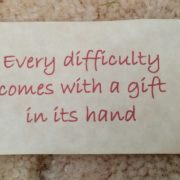What does your attitude about crying say about you?
Take a moment and ask yourself which of the following four statements reflects your belief about crying:
- Crying is healthy
- Crying is controllable
- Crying helps one feel better
- I hate crying
Recent research reflects that your beliefs about crying reveal your attachment style.
When I grew up, I got mixed messages from my family about crying. My mother would cry all of the time and I would presume that she would identify with either the ‘crying is healthy’ and/or ‘crying helps one feel better’ beliefs. Whereas, my father on the other hand would never cry and most likely would identify with ‘crying is controllable’ and/or ‘I hate crying’ beliefs. More recently, I heard several quotes that stuck with me, one within my yoga roots by Kripalvanandji “One who knows crying, knows spiritual practice.” and the other “Crying is how your body speaks when your mouth can’t explain the pain you feel” which appears to be from an unknown author.
Crying is a universal human attachment behavior and starts at birth. As little ones, crying notifies our caregivers that we need something, to relay important information to our attachment figures, such as food or sleep. As we grow up, crying is a part of emotional processing and acceptance of loss. The act of crying tends to elicit care and comfort from others throughout our lives. But what happens as we grow when our caregivers have different beliefs about crying and they may not respond to our needs with care and comfort as intended?
I remember times when I was crying and my father’s response was something like ‘I won’t speak to you until you stop crying’, which implied to me that he was not available to provide care and comfort and somehow I must find a way to do that for myself. I also witnessed that same response when my mother would be crying and he would not provide her with any comfort. I quickly learned that crying does not elicit comfort and care in my family and, instead, makes the source of comfort and care unavailable. As you might suspect, I tried my best to ‘stuff’ my emotions, especially my fear and sadness, and tried to rely on my words to explain my responses to the world. But what happens when words fail?
Another memory comes back to me when I was a young woman working in the corporate world and I found myself feeling unsupported at work, even bullied. I approached Human Resources and started to use my words, until my tears starting flowing and the dam broke. I could not stop crying and I felt ashamed. The HR person even alluded to the fact that my tears made it difficult to navigate the circumstances. Well the research findings now show that the beliefs we develop about crying as a result of our experiences with our attachment figures have implications for interpersonal and intrapersonal functioning throughout our lives, impacting all of our relationships.
Learning and embracing the wisdom of Kripalvanandji helps us embrace our humanness, which includes the capacity to feel and experience emotions, and release any shame around crying. It is a normal, natural human response to loss – whether we learned to deny/avoid the pain that comes with loss or cry more and stronger when we experience loss, hoping to get the care and comfort we all deserve – that has the power to heal.
If you would like to learn more about how your beliefs about crying may reflect your attachment style in relationships, click the box below:



